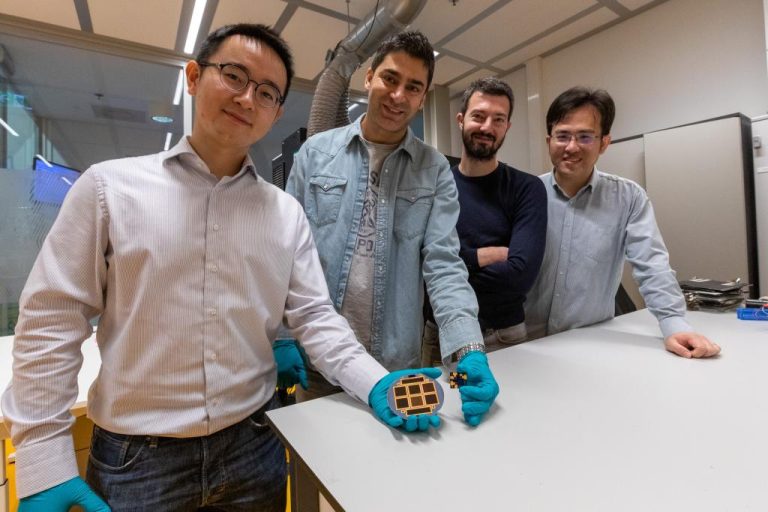Partial TU Delft solar cell most efficient
Researchers from TU Delft, TU Eindhoven, TNO and semiconductor specialist Imec raised eyebrows at the WCPRC-8 world solar conference in Milan. United in the Dutch Solliance partnership, they presented a hybrid solar cell with a record efficiency of 30%.
The solar cell is composed of a stack, or tandem, of semi-transparent perovskite solar cells, that are especially sensitive to ultraviolet and visible light, resting on a silicon solar cell. The efficiency of the perovskite solar cell is 19.7% and the silicon (PV) cell adds another 10.4%. Together they good for a record efficiency of 30%.
This is good news because a high power yield on a small surface area makes it attractive to integrate solar panels into building and construction elements, making more surfaces than only roofs and meadows suitable for generating solar energy.

Researchers Yifeng Zhao (left, TU Delft), Mehrdad Najafi, Valerio Zardetto and Dong Zhang (all from TNO) present their ultra-efficient tandem cell. (Photo: Niels van Loon.
At TU Delft, Professor of photovoltaic materials and devices Olinda Isabella of the Electrical Engineering, Mathematics and Computer Science Faculty (EEMCS) leads the research.
- More information in the TU Delft press release
Do you have a question or comment about this article?
j.w.wassink@tudelft.nl

Comments are closed.